Aviation Safety Monitor Weekly Report for the Week Ending March 29, 2025
As the month of March 2025 ends, safety margins are the worst they have been for the past year. The mean daily encroachment duration for the most severe category A and B conformance category deviations were higher in March than any month over the past year. Buffer encroachments have been high since November, with only a brief respite from the poor risk metrics in January. Safety margins decreased significantly over the past twelve months, with the mean daily encroachment duration for March 2025 almost 59 percent higher than the March 2024 value and the most severe encroachments twice as high. Based on analysis of previous years, we expect encroachment durations to peak in December, then gradually decline through the summer months. Unfortunately, the mean daily February and March encroachment durations are two of the three highest months for the past year, suggesting that conditions are deteriorating rather than improving. The data suggest that the NAS is showing signs of stress similar to the winter of 2022-2023, and the recent incidents are consistent with that degradation in safety margins.
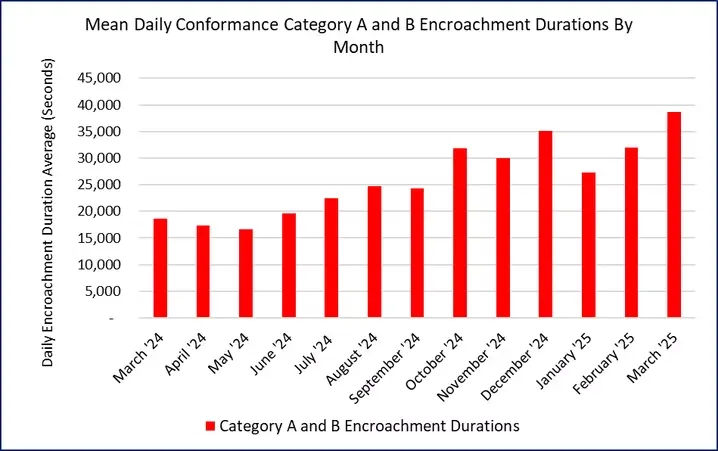
Figure 1. Mean Daily Encroachment Durations for Conformance Category A and B Deviations By Month
Weekly Safety Margin Update. Every Monday Robust Analytics reports on safety margins at 26 United States airports. With this Aviation Safety Monitor Weekly Report, Robust Analytics offers the aviation community timely assessments of changing safety margins and safety-related events. Dates and times are tracked in UTC and the week ends at midnight every Saturday. This week’s report includes data through 2400 UTC on March 29, 2025.
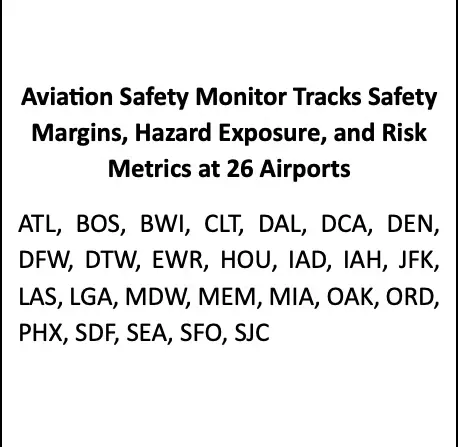
For New Readers: Please read our article “Did Safety Degrade in the National Airspace System in the Winter of 2022-2023?” that applies our methods and data to examine whether safety margins decreased during the events of winter 2022-2023.
The Aviation Safety Monitor measures safety margins by estimating the frequency, duration, and severity of buffer encroachments. Our paper “How Do We Measure Safety Margins?” provides a detailed description of the methods and data. That article can be found here https://www.robust-analytics.com/measure on the Robust Analytics website.
The Weekly Safety Report uses buffer encroachment events and durations to measure changes in safety margins. Safety margins remained low last week, as the risk metrics shows little change from their high levels of the past several months. Total encroachment durations decreased 3.3 percent, while the number of encroachment events increased 2.4 percent. Duration per encroachment event remained high at 30 seconds. The more severe Category A and B separation conformance deviations fell slightly but remain high.
The NAS is simply not showing the improvements in safety margins that we expect at this time of the year. The seasonal pattern for the previous two winters saw safety margins decline from September to December but then begin to improve steadily through the summer. That pattern is not holding this year, as safety margins remain stubbornly low this month. Mean daily encroachment durations for the first 29 days of March are unchanged from February, but only because good weather reduced the number of category PE and C separation conformance encroachments. March 2025 is on track to be the worst month of the past year.
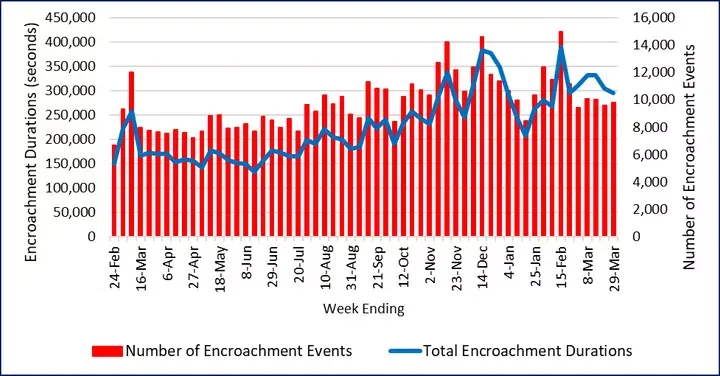
Figure 2. Weekly Buffer Encroachment Metrics
Buffer encroachments are classified into four separation conformance categories based on the severity of separation deviation. Category PE and C buffer encroachments identify relatively weak separation conformance deviations and are strongly affected by meteorological conditions. In fact, by definition, during visual meteorological conditions there are no buffer encroachments. The more severe encroachments in Category A and B provide a better indicator of changing safety margins.
Figure 3 reports the weekly total durations for the two conformance category groupings. The Category PE and C weekly durations bounce around with little long-term trend since we started reporting in February, primarily reflecting week-to-week variations in meteorological conditions and some seasonal variation. Last week the PE and C buffer encroachment durations increased despite the widespread good weather around the NAS. Category A and B duration totals for the week ending March 29 decreased 8.4 percent from the previous week but remain uncomfortably high. The combined metrics are 2.1 times greater than the low recorded in the first week of May.
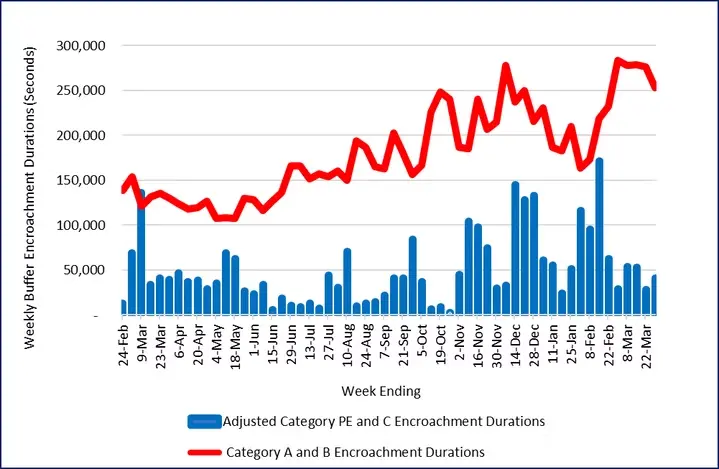
Figure 3. Weekly Trends in Encroachment Durations By Separation Conformance Category
Figure 4 reports the 24-hour moving average encroachment duration per aircraft of all conformance categories since February 2024. Figure 4 also indicates the historical range of the data by showing the 25th, 75th, and 90th percentile values of the duration per aircraft metric. The percentiles were estimated using data from May 2022 through February 2024.
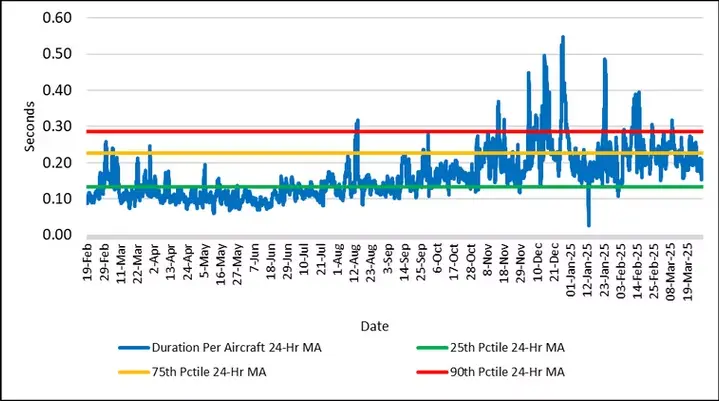
Figure 4. Moving Average Hourly Encroachment Duration Per Aircraft From February 18, 2024 Through March 29, 2025
Figure 4 reports data for past thirteen months and the pattern is very clear. The historical pattern of increasing buffer encroachments from the summer low into winter held, but we are not seeing the improvement expected in January and February. Buffer encroachment durations rose in September and October, then bumped up again in November and have remained high ever since. Variance improved over the past two months with fewer disturbingly high encroachment periods but the overall level is high. It is time to conduct a deep dive into the data and determine why safety margins remain degraded. Expect to see those findings soon in a Special Report by the Aviation Safety Monitor research team.
The Aviation Safety Monitor summarizes output from Risk Tracker, the Robust Analytics in-time terminal airspace hazard and safety metrics monitoring system.
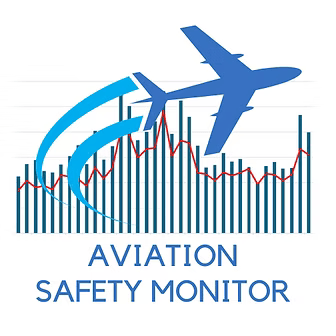
About the Aviation Safety Monitor
The Aviation Safety Monitor is a service provided by Robust Analytics to deliver timely information on terminal area safety in the National Airspace System (NAS). The safety monitoring and prediction technologies were developed by Robust Analytics over the past several years. Partial funding was provided by the NASA Small Business Innovation Research Program and the NASA System Wide Safety Project.
The Aviation Safety Monitor provides quantitative estimates of safety margins at 26 airports in 17 metropolitan regions in the United States. This information complements data on several safety-related events that are published elsewhere, with the FAA’s Runway Incursion Statistics website a good example. However, the available safety information can be misleading if it only reports the frequency of violations with no insight into how safety buffers may vary minute-to-minute and day-to-day. The Aviation Safety Monitor aims to provide this insight every week.
